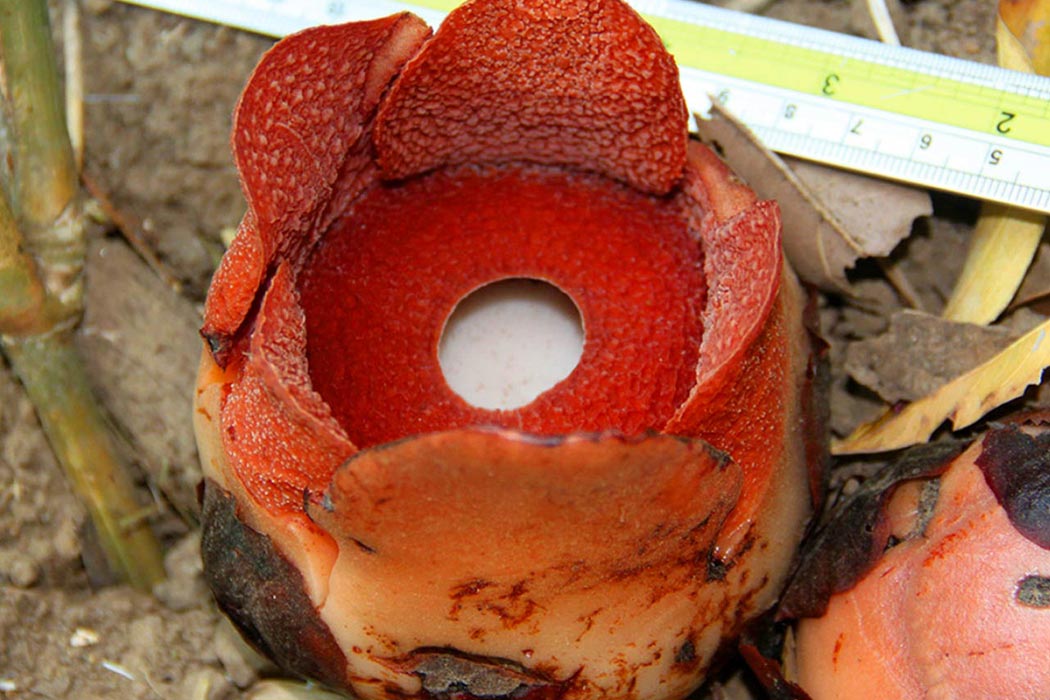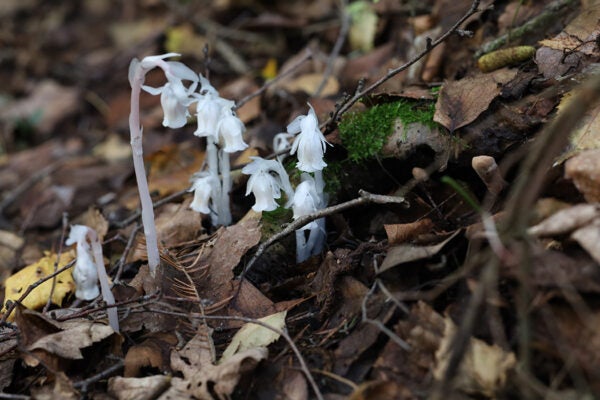Botanists exploring a mountainous region in the Philippines recently stumbled across an unusually small corpse flower. The flower, red and about four inches across, was discovered by accident in a recently logged area of rainforest. To date, it is the smallest known example of the genus Rafflesia, commonly known as corpse flowers. Four inches is not a small flower, but it is tiny compared to some of its cousins.
Rafflesia flowers are found throughout tropical Southeast Asia, primarily the Philippines, Indonesia, Malaysia, and Thailand. The best known is the immense Rafflesia arnoldi, named for its discoverer, Joseph Arnold, a botanist and doctor in the Royal Navy who came across the first specimen in 1818. Before succumbing to tropical fever just days later, Arnold had this to say about his first glimpse of the flower “… Had I been alone, and had there been no witnesses, I should, I think, have been fearful of mentioning the dimensions of this flower.” Arnold thought his state of mind would be questioned because he reported finding a 15-pound flower. In fact, R. arnoldi’s single flower can be three feet across and weigh up to 36 pounds. It is by far the world’s largest flower, and the Rafflesia genus as a whole boasts all of the world’s largest flowers.
Size isn’t the only strange feature of these giants. Rafflesia are parasitic; like orchids or misletoe, they obtain their nutrients entirely from a host vine and do not root directly in the ground. They smell horrendous. In fact, the smell has been compared to roadkill. The awful smell attracts flies, which act as the flowers’ pollinators. The flies burrow into the foul bloom just as they would burrow into a dead animal. Rafflesia flowers are rare, so they need to be able to attract pollinators across great distances. Both a male and a female flower are required, so the odor must be extra ripe in order to attract the pollinators to multiple flowers. The horrible smell has one other advantage: the bloom is short lived, so the flower cannot risk being eaten during this critical time. The smell strongly discourages herbivores.
Much about Rafflesia remains mysterious. Their evolutionary relationships to other plants are unclear. Their conservation status is also murky, but they seem to be naturally uncommon. These incredible plants unfortunately face the pressures of habitat loss. Moreover, they’re popular with tourists and traditional medicine purveyors who disturb them.







